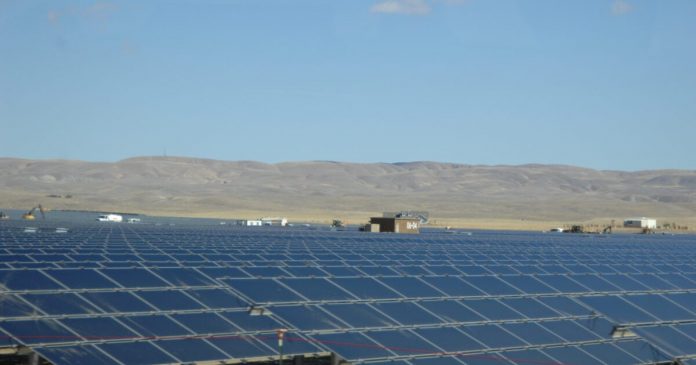
According to the Federal Highway Administration, there are over 280 million signed up cars in the United States, consisting of vehicles, trucks, and bikes. President Biden’s strategy intends to change 67% of these cars with electrical ones by2032 While China, which produces 80% of the batteries, would benefit, American customers and the environment would suffer as an outcome.
First, acquiring an electrical automobile (EV) is costly. Typically, the purchase cost of an EV is presently $26,000 more than a gasoline-powered vehicle. Next, utilizing an EV as a main car or for long household journeys is very troublesome. They have a brief series of just 291 miles usually, compared to 400 miles for gasoline-powered automobiles. In addition, they have long charging times and minimized efficiency at temperature levels listed below 40 ° F or above 90 ° F. On incredibly cold days, the variety of the battery can reduce by as much as 50% EVs might not be appropriate for usage in the majority of northern states or out west, where temperature levels vary from extremely high to really low.
According to the Department of Transportation, depending upon the kind of EV you purchase, charging to 80% capability can take anywhere from 20 minutes to 10 hours The reason that 80% capability is frequently pointed out in literature is that the top 20% and bottom 20% of the EV battery are either unusable or not advised for usage. This reality substantially impacts the real series of an EV compared to the variety pointed out by ecologists.
They declare that this switch is being done to conserve the environment, however with charging times of as much as 10 hours, every American home would require a minimum of one battery charger. Because many homes have more than one automobile, numerous battery chargers would be essential. If public charging stations on highways had quick battery chargers that just need 20 minutes to fill a battery to 80%, much more of these battery chargers would be required than the gas pumps that exist today.
It just takes 3-4 minutes to fill an automobile with gas, so waiting in a line 5 automobiles deep would be a 20- minute wait. With EVs, that would be a 100- minute wait, followed by the 20 minutes it requires to charge your EV battery to 80%. Filling station would require to include surcharge stations, or cities would require to install them in car park. In any case, there would be a huge building and construction of brand-new electrical charging stations.
Nowadays, you change a completely working phone or computer system every 2 to 3 years since the innovation keeps enhancing. This will hold true with EVs and charging stations. As brand-new innovation emerges, old EVs and charging stations will be dealt with, and brand-new ones will be integrated in the numerous millions, which might be destructive to the environment.
If all 280 million United States automobiles were transformed to EVs, the need for electrical energy would increase by 25% to 50% Getting more electrical power would require broadening the electrical grid and most likely burning more nonrenewable fuel sources. The White House has actually set an objective of lowering emissions by 50%– 52% compared to 2005 levels by 2030 and accomplishing net absolutely no by2050 To attain this objective, power generation would require to change to wind and solar, both of which have substantial ecological effects that supporters frequently ignore.
Feasibility research studies on forecasted wind and solar power production typically compare the power produced to existing requirements however stop working to think about that in simply a couple of years, the majority of vehicles are anticipated to be EVs, triggering electrical energy need to increase.
Aside from the truth that wind and solar farms can not produce enough energy to fulfill the requirements of a whole population driving EVs, they are likewise ecologically harmful The facility of wind or solar farms interrupts regional plant and animal environments, which is a substantial issue, particularly in locations with delicate communities or threatened types. Massive wind and solar farms need substantial acreage, possibly transforming natural landscapes or farming lands. Furthermore, solar production needs a good deal of water–20 gallons per megawatt hour
The production and decommissioning of wind turbines produce damaging emissions Production photovoltaic panels includes mining and processing basic materials like silicon, silver, and other metals, which can have substantial ecological effects. Photovoltaic panel consist of harmful products such as cadmium, silicon, and gallium arsenide, which are poisonous to human beings and animals and can contaminate groundwater and air. The disposal and recycling of photovoltaic panels at the end of their life process present ecological difficulties, as some elements can be harmful. By 2050, approximates recommend there might be as much as 78 million lots of photovoltaic panel waste worldwide.
EVs will cost customers more cash, be unwise, and trigger an ecological catastrophe. One method to alleviate the increased need for electrical power might be for the federal government to allocate electrical energy use, causing rolling blackouts and restrictions on air-conditioning and heating. They might tax the use of public roadways to prevent driving. In any case, lifestyle would reduce together with individual flexibilities.
The post Electric Vehicle Calculations Don’t Add Up appeared initially on The Gateway Pundit
This article may have been paraphrased or summarized for brevity. The original article may be accessed here: Read Source Article.





![President Trump Gives Barron A Shout Out At Inaugural Parade: His Unexpected Response is Pure Gold! [VIDEO] president-trump-gives-barron-a-shout-out-at-inaugural-parade:-his-unexpected-response-is-pure-gold!-[video]](https://news.lateawakening.com/wp-content/uploads/2025/01/35545-president-trump-gives-barron-a-shout-out-at-inaugural-parade-his-unexpected-response-is-pure-gold-video-100x70.jpg)



